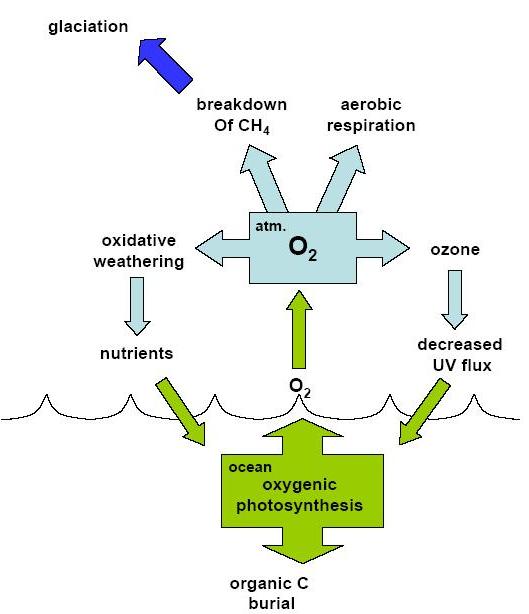
The evolution of organic photosynthesis ca.2.5 billion years ago would have had a profound effect on Earth's surface environments, and potentially on aerobic respiration by eukaryotes.
Alan J. Kaufman, professor of geology at the University of Maryland, Maryland geology colleague James Farquhar, and a team of scientists from Germany, South Africa, Canada, and the U.S.A., uncovered evidence that the oxygenation of Earth's atmosphere - generally known as the Great Oxygenation Event - coincided with the first widespread ice age on the planet.
"We can now put our hands on the rock library that preserves evidence of irreversible atmospheric change," said Kaufman. "This singular event had a profound effect on the climate, and also on life."
Using sulfur isotopes to determine the oxygen content of ~2.3 billion year-old rocks in the Transvaal Supergroup in South Africa, they found evidence of a sudden increase in atmospheric oxygen that broadly coincided with physical evidence of glacial debris, and geochemical evidence of a new world-order for the carbon cycle.
"The sulfur isotope change we recorded coincided with the first known anomaly in the carbon cycle. This may have resulted from the diversification of photosynthetic life that produced the oxygen that changed the atmosphere," Kaufman said.
Two and a half billion years ago, before the Earth's atmosphere contained appreciable oxygen, photosynthetic bacteria gave off oxygen that first likely oxygenated the surface of the ocean, and only later the atmosphere. The first formed oxygen reacted with iron in the oceans, creating iron oxides that settled to the ocean floor in sediments called banded iron-formations - layered deposits of red-brown rock that accumulated in ocean basins worldwide. Later, once the iron was used up, oxygen escaped from the oceans and started filling up the atmosphere.
Once oxygen made it into the atmosphere, Kaufman's team suggests that it reacted with methane, a powerful greenhouse gas, to form carbon dioxide, which is 62 times less effective at warming the surface of the planet. "With less warming potential, surface temperatures may have plummeted, resulting in globe-encompassing glaciers and sea ice" said Kaufman.
In addition to its affect on climate, the rise in oxygen stimulated the rise in stratospheric ozone, our global sunscreen. This gas layer, which lies between 12 and 30 miles above the surface, decreased the amount of damaging ultraviolet sunrays reaching the oceans, allowing photosynthetic organisms that previously lived deeper down, to move up to the surface, and hence increase their output of oxygen, further building up stratospheric ozone.
"New oxygen in the atmosphere would also have stimulated weathering processes, delivering more nutrients to the seas, and may have also pushed biological evolution towards eukaryotes, which require free oxygen for important biosynthetic pathways," said Kaufman.
The result of the Great Oxidation Event, according to Kaufman and his colleagues, was a complete transformation of Earth's atmosphere, of its climate, and of the life that populated its surface. The study is published in the May issue of Geology.



Reader Comments
to our Newsletter